This month marks the 43rd anniversary of the birth of Joint Issue, a publication my friends and me produced, which became the Newspaper of Record for the anti-Vietnam War movement and counterculture “happenings” in East Lansing, Michigan during the years 1971-1973.

Other papers like the Red Apple News, The Paper and the Bogue Street Bridge were around before and after Joint Issue. But none covered the anti-war movement and the counterculture like Joint Issue. None commanded the large readership, the community support, — including substantial advertising by local merchants — or the attention from police and other protectors of public morals.
Every local “radical” of consequence passed through our doors at one time or another. Every Lansing-area revolutionary and revolutionary wannabe read our paper and tried to know us.
Even the MSU police paid a visit from time to time. At 3AM one morning we found them in our Student Services office rummaging through our stuff. No warrants required, of course.
During the past months I have reread many of the old issues that me and my friends Ken, Davy, Patti and others once proudly worked to publish. It’s amazing how prescient we were, how many of our “wild” ideas caught hold and became mainstream. But there are disappointments too. Some causes, like gay rights, are still being fought. Editors Note: In June 2003, the Supreme Court legalized gay relationships; on 26 June 2015 all gay marriages became legal and constitutionally protected in the United States.
I included below a photo of each page of our first issue for folks to read. Some will be relieved to learn that many issues of the original Joint Issue are protected at libraries with a complete collection in very good condition in the archives of the MSU library.

The history of the underground press in general and of Joint Issue in particular remains largely untold by mainstream media. It is good that Kenny Wachsberger stepped up to preserve much of this history in his important and thorough Insider Histories — available through Amazon.com. The section on Joint Issue begins on page 195. It is a must read for anyone who wants to know what was really going on during this transformational era in US history.
Other important books by Ken Wachsberger can be found at this link.
The photos below are of a newspaper that is showing its age after forty-three years sitting in a library’s cardboard collection box or on the back shelf of a closet.
Back in the day, we published Joint Issue on clean white Demy-sized sheets folded in half to make the individual pages. We often used colored sheets — pink, blue, orange, green and yellow were our favorites — to give the Joint Issue a fresher look. Sometimes we used colored ink to highlight important stories.
Impco Graphics of Mason was our printer. Denny Preston, the local artist and musician who created the LugNuts logo, designed ours.
Joint Issue began publishing during the year Hewlett-Packard marketed the first hand-held calculators to the public. Like the HP calculator — able only to multiply and divide — Joint Issue faced technical hurdles of its own. Personal computers hadn’t yet been invented, so each page had to be painstakingly laid out by hand.
We typed up the copy on paper sheets with an actual Smith-Corona typewriter (remember those?), cut the typewritten sheets into usable bite-size pieces with scissors or exacto-knives, slopped on the glue with brushes or fingers, and carefully tweezered the pieces into location onto white cardboard layout sheets hanging on clotheslines in our basement office.
We pasted cool graphics (pictures) we scissored (if we had to) from books and magazines (expensive!) or we got them from our volunteers and donors. Sometimes a picture or piece of text would fall off the copy-sheet before it made it to Impco Graphics in Mason to be published. Someone might shove a piece of text into an inappropriate location. Shit happened.
But that was its charm and our purpose. We weren’t supposed to be a polished publication put out by an aristocracy trying to sell poisons to the public. Joint Issue was a people’s paper published by common people without an internet, Facebook, or Instagram.
Our first issues, like the one featured below, were crude. But over time the sophistication of Joint Issue grew and its reputation as a reliable chronicler of what was happening in the street became established.
Billy Lee
Note: to magnify photos for reading, click on individual photo. Some pages are out of sequence.
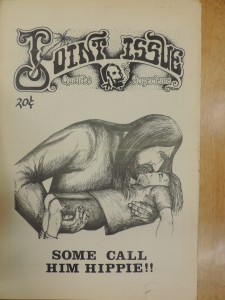
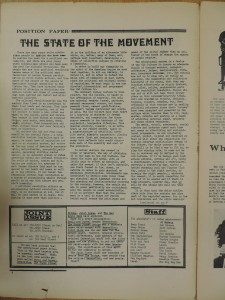
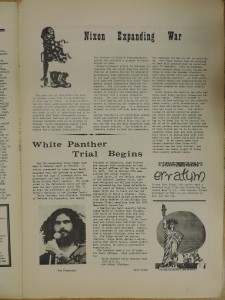
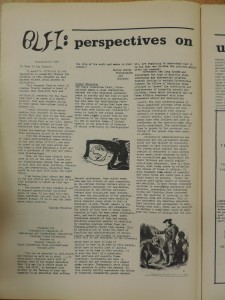
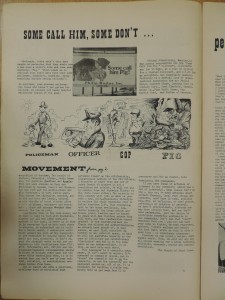
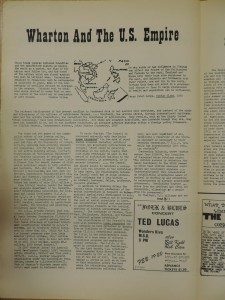
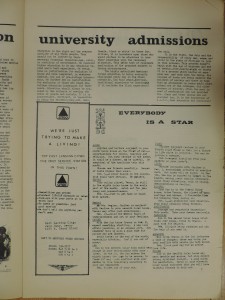
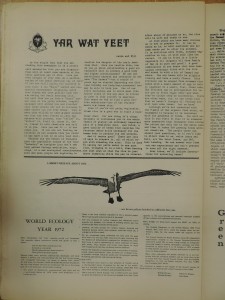
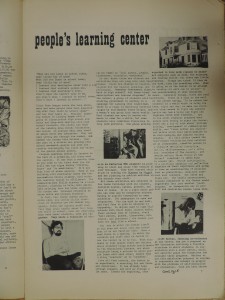
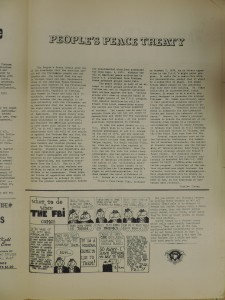
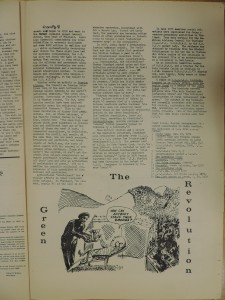
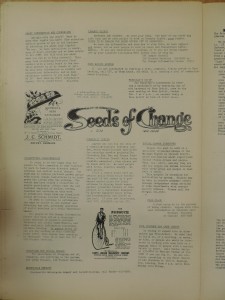
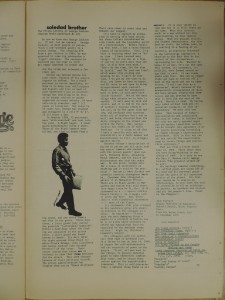
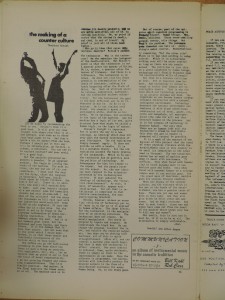
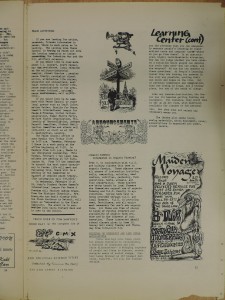
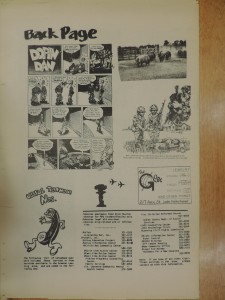

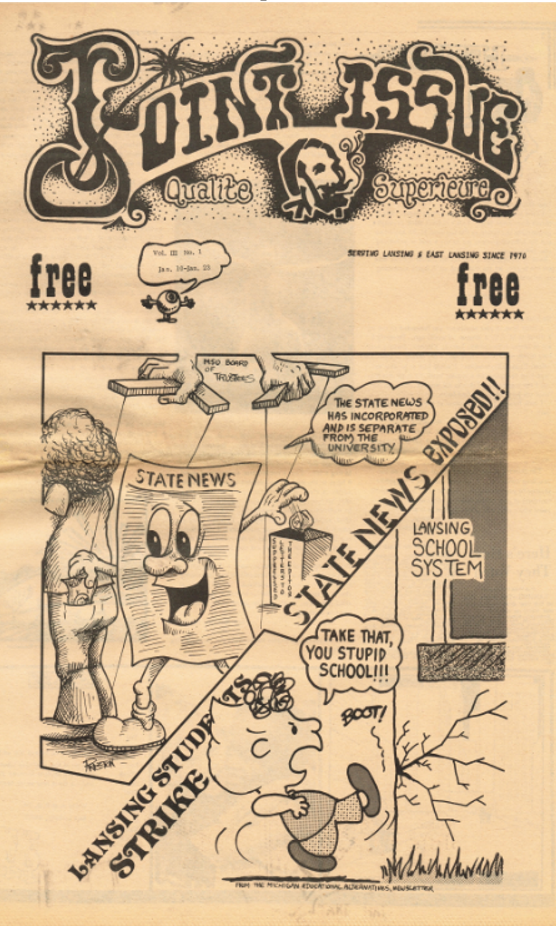
Hello Billy Lee, I found your memories of your Joint Issue amusing. I don’t remember it well but I was there (in the SMC) and recall the name. Good Luck to you and all the other veterans of the Antiwar Movement at Michigan State.
Thanks, Jim.
Great piece on Joint Issue, Bill. To jump ahead slightly, on July 14, 1971, the first free Joint Issue hit the streets. Circulation went from 2-3,000 whenever we could sell enough of the previous issue to enable us to afford a new one to 10-15,000 bi-weekly supported by ads primarily from local community businesses. In accepting ads, we lived up to the highest of moral countercultural standards: We never accepted ads from pig landlords or barber shops. JI was the first underground paper anywhere to be distributed free through ad sales, which made it a powerful tool for community organizing. Other papers followed our example: Free For All in Madison, Wisconsin; Columbus Free Press in Columbus, Ohio. Thanks for providing a link to volume 1 of my four-volume Voices from the Underground Series. For readers wanting to learn about and purchase the complete set, they can go to http://www.voicesfromtheunderground.com/voices.htm
Thanks, Ken.
Note to readers: Ken Wachsberger is the bona fide expert on this history. He lived it, traveled widely, knew lots of people and recorded the history as it happened in his many journals. His books should be in the library of every citizen who wants to go beyond the white-washed version of the billionaire media to learn what Americans were really like in the 1960s and 1970s.